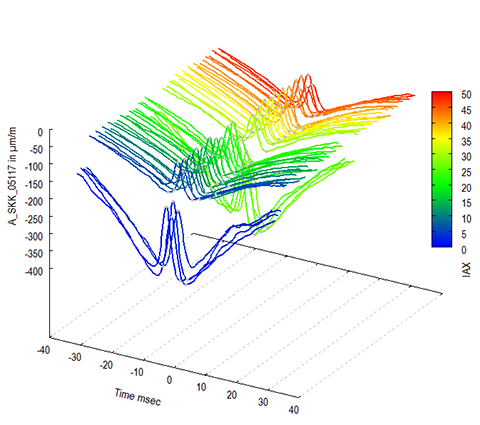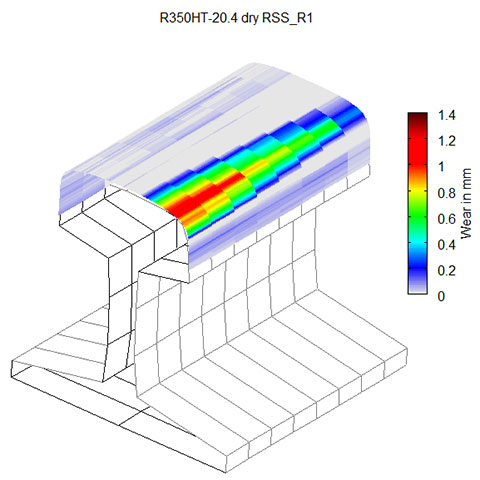RSS – Railway System Security
02/2010 – 01/2013


Accelerations measured on the rail

Rail wear, 3D
The conveyance system “railroad” is facing a “revival” in the whole world at the beginning of the 21 th century. Compared to their transport volume railways are the most energy-efficient and eco-friendly means of transport in land traffic. The rail with it’s tasks of “leading” and “carrying” the railway- vehicles is the basis for the high safety level and low rates of accidents in railway traffic. A failure of this key components will immediately endanger persons on these vehicles, the assets along the railway- routes and it’s residents.
Recently, totally new patterns of damages were discovered in the network of the Austrian Federal Railways, ÖBB, too (as well as in a larger extent internationally). The ÖBB treats these damages by a high outlay of costs but a failure of the railway-path cannot be excluded.
The project RSS meets this serious problem by a combination of several methods interlocked which are unique until nowadays. In a first step all existing hypotheses will be examined by a team to describe these phenomenons in a mathematical and physical way which will lead to the creation of a model for the system. A next step will verify - and if necessary modify - this model by using experimental measurement techniques an special “wheel-rail”- test station. Hereby the quality of the “standard” rail and an optimized material will be used. The data and experiences gotten will be applied at an “in-situ”- test point to measure the performance and the potential of the applied and optimized quality of the material compared to the “standard”-quality in a highly stressed railway path. Deduced from this, test parameters should be found for the test station to generate real constraints to enable the material tests under real conditions.
Finally, the results and experiences gotten from the test station and the “in-situ”-test point should bring an optimized material quality for the rails and show relevant limits for the application.
Providing a functioning infrastructure with a low rate of accidents will lead to a high safety sense in the population. Increasing safety and security of the system “railroad” in spite of more critical strains and to strengthen this perception in the population long-term is the target of this project.

